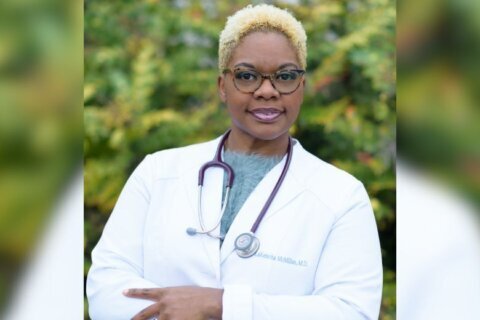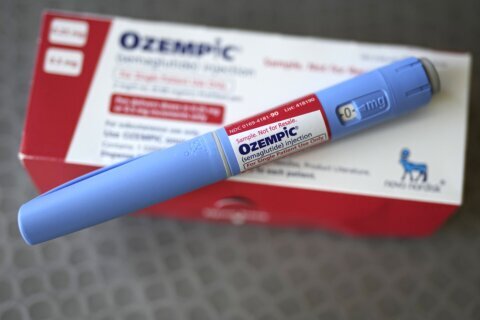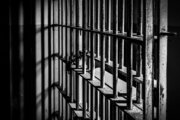For our Aging Gracefully series, WTOP speaks with different specialists at MedStar Washington Hospital Center about the best ways to maintain your health as you age.
WASHINGTON — Orthopedic surgeon Dr. James Tozzi has some advice for those under the age of 50: “Exercise really should be part of what you do every day — at least five days a week — and it should be moderate to high intensity for about 45 minutes to an hour.”
That’s to ensure you minimize problems related to bone health down the road.
Bone health is a major concern among the aging population. Deteriorating bones can lead to fragility fracture, loss in height and loss in proper spinal balance, all of which contribute to disability and impairment in old age.
“[Those with poor bone health] lose height; they become more rounded in their shoulders; their abdomen becomes more protuberant even if they haven’t had a weight gain. And this is a vicious cycle of progressive deterioration,” says Tozzi, who is the chairman of orthopedics at MedStar Washington Hospital Center.
And while bone loss is an unavoidable effect of aging, there are ways to minimize this loss and to keep your bones as healthy as possible.
“As one ages, if they don’t stay active in a way that stimulates bone health, which is actually through active muscle contraction against gravity, they will lose bone mineral, bones will become more brittle, and more brittle bone is more fragile bone.”
So the best thing to do is lace up your shoes and start moving your body. And the sooner, the better.
“There are a lot of people who think becoming active when they’re older is a good way to prevent it, but you have, in your youth, the time to store calcium in your bones. And I think of it as a savings plan or a Christmas club … You really have to start early in life,” Tozzi says.
That’s because unlike other age-related diseases, deteriorating bone health doesn’t always come with warning signs.
“It’s a lot like the tip of the iceberg — you don’t notice it until it’s pretty advanced.”
Tozzi explains that radiographic changes in bone mineral density deficiencies aren’t present until 50 percent of bone mineral is lost. Therefore, early signs aren’t always noticeable with an X-ray.
Because of this, Tozzi says high-risk patients — those who have a family history of osteoporosis, patients who have underlying conditions that cause them not to absorb calcium and patients who are diabetic — should begin bone screenings around the age of 50. Women are also more susceptible to bone loss than men.
“While they may not be symptomatic early on, they probably should go for early screening, just like the family that has colon cancer goes for earlier colonoscopies.”
If you find that your bones aren’t as healthy as you hoped, there are ways to manage bone loss.
“Is it ever too late? There are times when it is, but if you’re in reasonably good health, you don’t have significant osteoporosis, I think it’s good to start with a low-impact exercise program — something like Pilates, stationary bicycling, walking on a treadmill, using an elliptical, light resistance,” Tozzi says.
And remember, everyday choices — even when you’re young — affect how you will age down the road. Tozzi says to focus on the modifiable factors.
“Your diet and exercise. Genetics — not yet,” he says.







